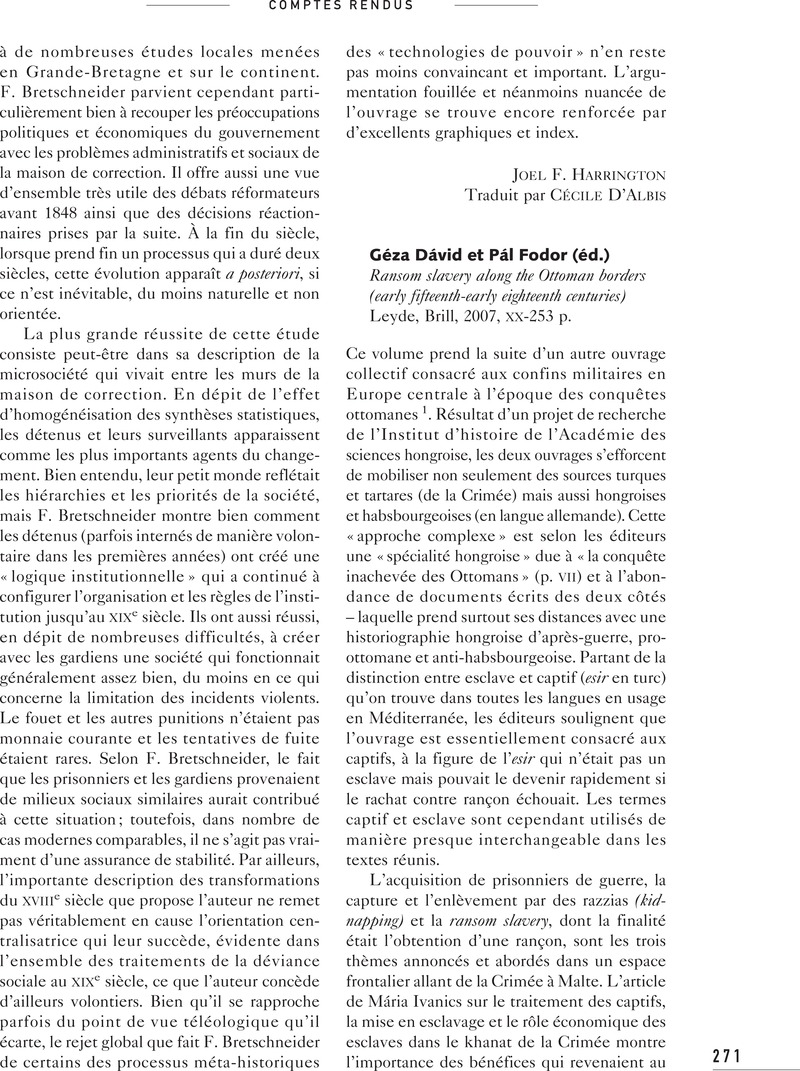No CrossRef data available.
Published online by Cambridge University Press: 20 January 2017

1 - Dávid, Géza et Fodor, Pál (éd.), Ottomans, Hungarians, and Habsburgs in Central Europe: The military confines in the era of Ottoman conquest, Leyde, Brill, 2000.Google Scholar
2 - Pál Fodor, « Piracy, ransom slavery and trade: French participation in the liberation of Ottoman slaves from Malta during the 1620s », Turcica, 33, 2001, p. 119–134.
3 - Traduction allemande par W. Schmucker, en attendant la traduction française par G. Özkoray dans la collection « Mediterranea » aux éditions Bouchène.
4 - Peter F. Sugar, « The Ottoman ‘professional prisoner’ on the Western borders of the empire in the sixteenth and seventeenth centuries »,Études Balkaniques, VII-2, 1971, p. 82–99.